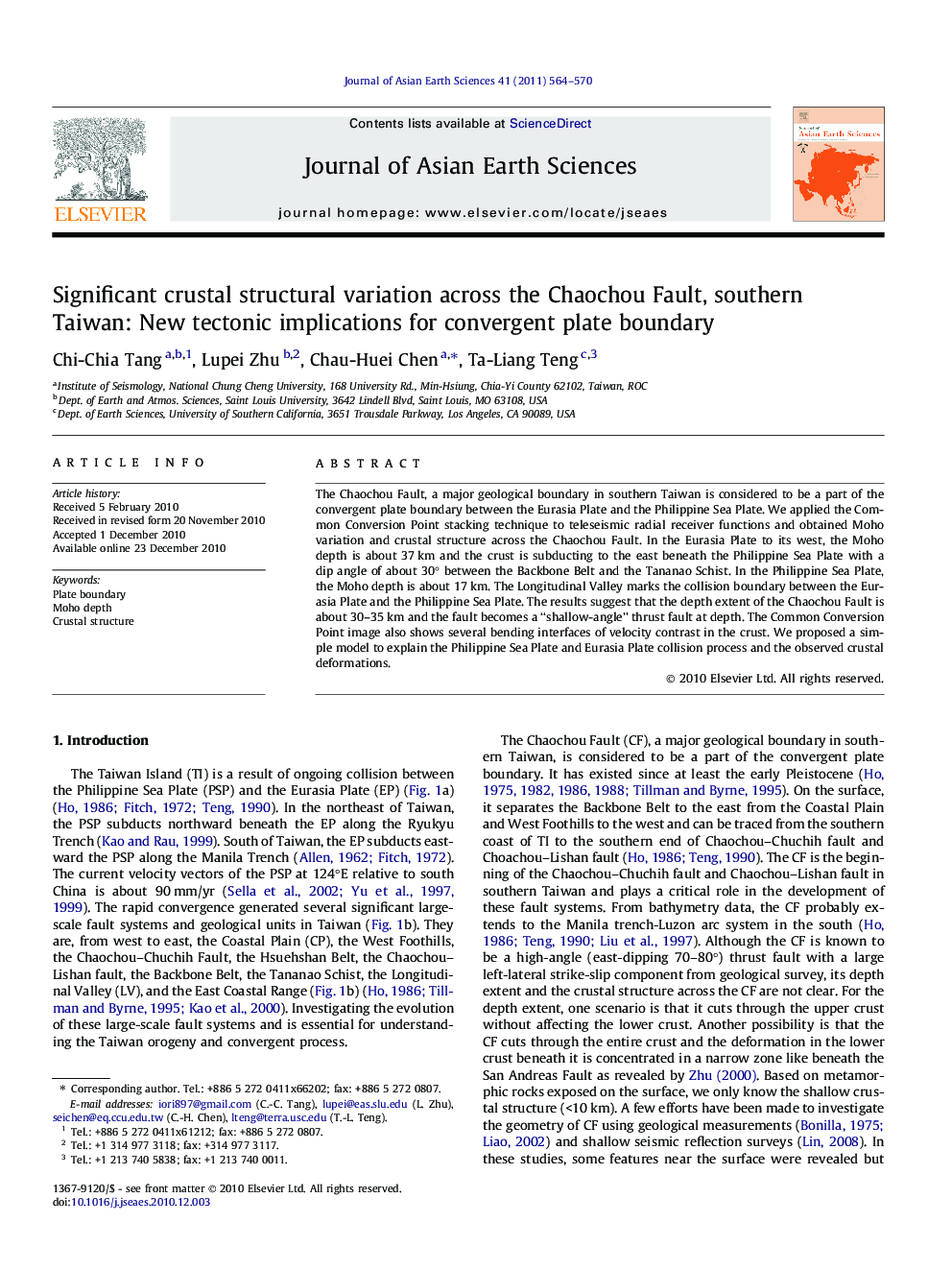| Article ID | Journal | Published Year | Pages | File Type |
|---|---|---|---|---|
| 4731741 | Journal of Asian Earth Sciences | 2011 | 7 Pages |
The Chaochou Fault, a major geological boundary in southern Taiwan is considered to be a part of the convergent plate boundary between the Eurasia Plate and the Philippine Sea Plate. We applied the Common Conversion Point stacking technique to teleseismic radial receiver functions and obtained Moho variation and crustal structure across the Chaochou Fault. In the Eurasia Plate to its west, the Moho depth is about 37 km and the crust is subducting to the east beneath the Philippine Sea Plate with a dip angle of about 30° between the Backbone Belt and the Tananao Schist. In the Philippine Sea Plate, the Moho depth is about 17 km. The Longitudinal Valley marks the collision boundary between the Eurasia Plate and the Philippine Sea Plate. The results suggest that the depth extent of the Chaochou Fault is about 30–35 km and the fault becomes a “shallow-angle” thrust fault at depth. The Common Conversion Point image also shows several bending interfaces of velocity contrast in the crust. We proposed a simple model to explain the Philippine Sea Plate and Eurasia Plate collision process and the observed crustal deformations.
Research highlights► The CCP stacking technique revealed the crustal structure across the CF. ► The Moho depth is about 37 km in the east part of CF beneath the Eurasia Plate. ► The Moho depth is about 17 km in the east part of CF beneath the Philippine Sea Plate. ► The depth extent of CF is about 30∼35 km. ► The CF probably becomes a “shallow-angle” thrust fault at depth.
